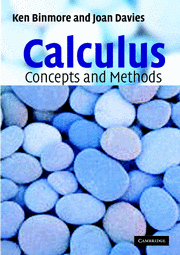-
The pebbles used in ancient abacuses gave their name to the calculus, which today is a fundamental tool in business, economics, engineering and the sciences. This introductory book takes readers gently from single to multivariate calculus and simple differential and difference equations. Unusually the book offers a wide range of applications in business and economics, as well as more conventional scientific examples. Ideas from univariate calculus and linear algebra are covered as needed, often from a new perspective. They are reinforced in the two-dimensional case, which is studied in detail before generalisation to higher dimensions. Although there are no theorems or formal proofs, this is a serious book in which conceptual issues are explained carefully using numerous geometric devices and a wealth of worked examples, diagrams and exercises. Mathematica has been used to generate many beautiful and accurate, full-colour illustrations to help students visualise complex mathematical objects. This adds to the accessibility of the text, which will appeal to a wide audience among students of mathematics, economics and science.
The pebbles used in ancient abacuses gave their name to the calculus, which today is a fundamental tool in business, economics, engineering and the sciences. This introductory book takes readers gently from single to multivariate calculus and simple differential and difference equations. Unusually the book offers a wide range of applications in business and economics, as well as more conventional scientific examples. Ideas from univariate calculus and linear algebra are covered as needed, often from a new perspective. They are reinforced in the two-dimensional case, which is studied in detail before generalisation to higher dimensions. Although there are no theorems or formal proofs, this is a serious book in which conceptual issues are explained carefully using numerous geometric devices and a wealth of worked examples, diagrams and exercises. Mathematica has been used to generate many beautiful and accurate, full-colour illustrations to help students visualise complex mathematical objects. This adds to the accessibility of the text, which will appeal to a wide audience among students of mathematics, economics and science.




